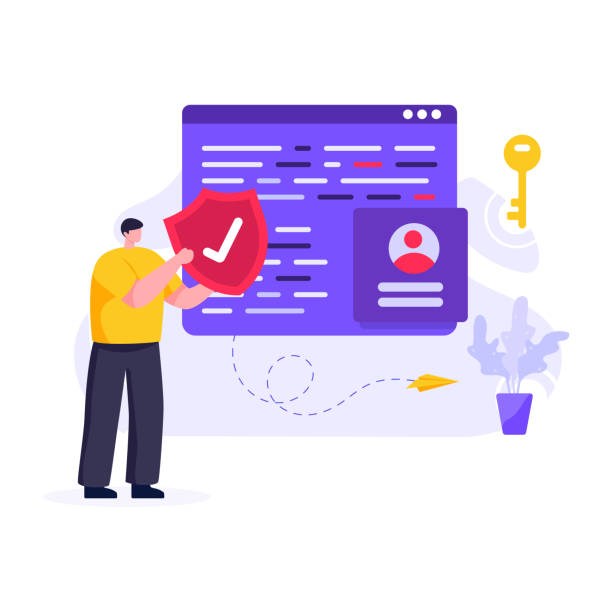Introduction to SEO-Optimized Website Design and its Importance
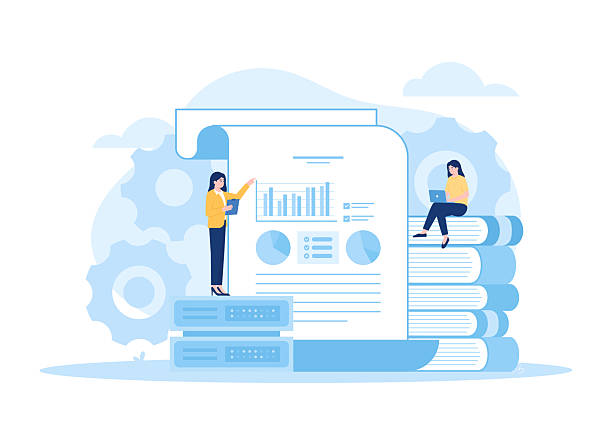
In today’s digital world, having a website is only the first step.
What truly matters is the visibility of this website to target users.
This is where the concept of SEO-optimized website design comes into play.
An SEO-optimized website is one that, by adhering to specific principles and rules, is more understandable to search engines like Google and has a higher chance of achieving top rankings in search results.
This not only leads to increased organic traffic but also enhances user trust and credibility in your brand.
The ultimate goal of #SEO_website_design is to attract more audience, convert them into customers, and ultimately grow your business.
This educational and explanatory approach will help you gain a deep understanding of this vital topic and set you on the right path.
Why should we consider designing a website that search engines love? Can’t paid traffic be a suitable alternative? These are questions whose answers demonstrate the strategic importance of SEO.
SEO-optimized website design is a long-term investment that brings sustainable returns for your business and frees you from sole reliance on paid advertising.
Is your company’s website as professional and trustworthy as it should be? With specialized corporate website design by RasWeb, create an online presence that reflects your credibility and attracts more customers.
✅ Build a powerful and professional brand image
✅ Convert visitors into real customers
⚡ Get a free consultation now!
Basic SEO Principles in Website Design

For a website to be truly SEO-friendly, a set of basic principles must be incorporated from the outset of the design process.
These principles include three main categories: On-Page SEO, Off-Page SEO, and Technical SEO.
On-Page SEO involves optimizing elements within the website, such as content, keywords, titles, meta descriptions, and URL structure.
Off-Page SEO includes activities like link building from other websites and social media engagement, which help increase domain authority.
Technical SEO also addresses technical aspects of the website such as loading speed, mobile responsiveness, code structure, and security.
Adhering to these principles in website design not only helps search engines better understand your site but also improves User Experience (UX).
A fast, secure, and relevant website attracts more users.
This specialized and educational section helps you become familiar with the foundations of this science and understand the role each of these sections plays in the overall success of your website.
Did you know that even a small change in URL structure can significantly impact your ranking?
Keyword Research: The Backbone of SEO
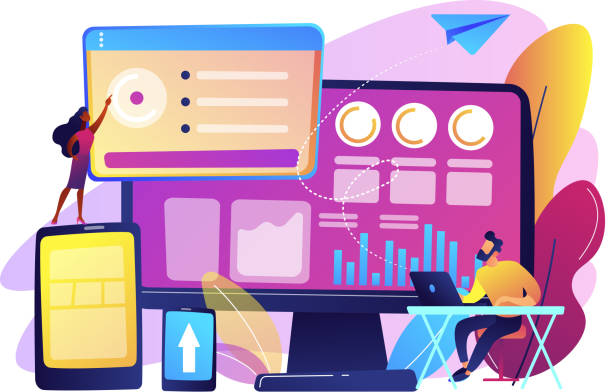
Keyword research is one of the most vital steps in the SEO-optimized website design process.
This stage helps you understand exactly what your target users are looking for and what phrases they use to search.
By identifying appropriate keywords, you can optimize your content to match users’ search intent and significantly increase your chances of being seen in search results.
Keywords are not limited to single words; they also include Long-tail Keywords, which typically bring more targeted traffic.
Tools like Google Keyword Planner, Ahrefs, and Moz Keyword Explorer can assist you in this phase.
This section provides an analytical and guidance approach to help you correctly formulate your keyword strategy.
Choosing the right keywords is like finding a treasure map that leads you to your real audience.
Without strong keyword research, all your efforts in other SEO areas may be futile.
| Keyword Type | Description | Example |
|---|---|---|
| Short-tail Keywords | General phrases with high search volume and fierce competition. | “SEO”, “Mobile” |
| Long-tail Keywords | Longer and more specific phrases with lower search volume but clear search intent. | “Best method for SEO-optimized website design in 2024”, “Free WordPress SEO tutorial” |
| Local Keywords | Keywords that include a specific location name. | “SEO-optimized website design in Tehran”, “SEO consultation Isfahan” |
Content Optimization for Search Engines
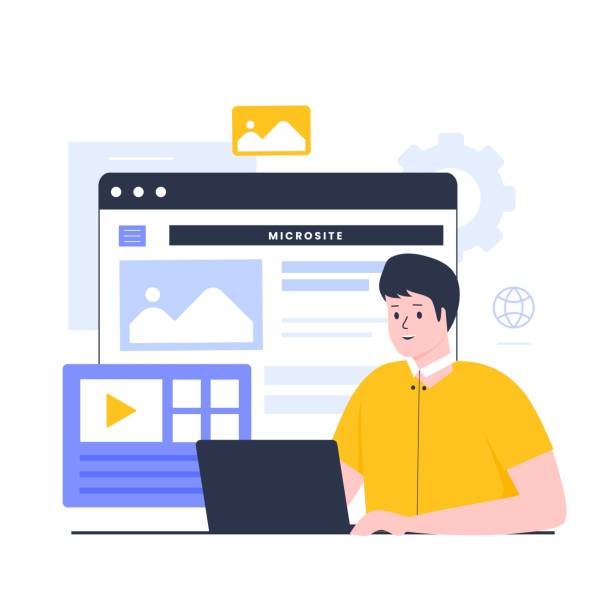
Content is king, and this holds true in SEO-optimized website design.
After keyword research, it’s time to produce high-quality content optimized for search engines.
Your content should not only be understandable to search engines but also valuable, engaging, and informative for users.
Natural and non-excessive use of keywords in the text, compelling titles and relevant H1, H2, and H3 tags, as well as proper content structuring using short paragraphs, lists, and optimized images, all play a role in improving your content’s SEO.
Fresh content and its regular updates also send a positive signal to search engines.
This section provides a complete guide to producing SEO-friendly content that, in addition to better ranking, encourages users to interact more with your site.
Does your content truly answer users’ questions? Can it keep them engaged for hours? Content optimization isn’t just about keywords; it’s about providing real value to the audience.
Good content helps your website shine in search results and increases your credibility.
Producing specialized and comprehensive content can position you as an authority in your field of activity and drive targeted traffic to your site.
Are you tired of losing business opportunities due to not having a professional corporate website?
RasWeb, with its professional corporate website design, helps you:
✅ Build a powerful and reliable brand image
✅ Convert site visitors into loyal customers
⚡ Get a free consultation now!
URL Structure, Navigation, and User Experience (UX)
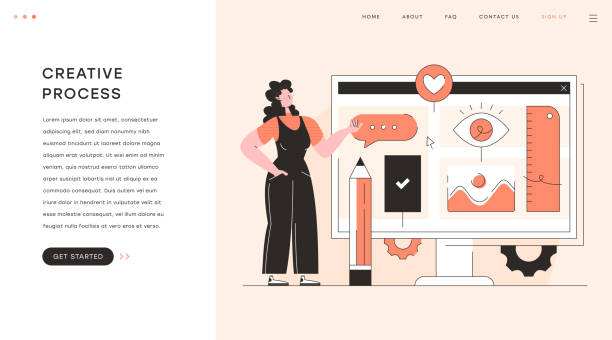
An optimized website design goes beyond content and keywords, paying special attention to structural aspects and user experience.
The URL structure should be simple, understandable, and contain relevant keywords.
Clean and meaningful URLs are not only better for search engines but also help users navigate your website more easily.
Website navigation must also be intuitive and logical.
Users should be able to easily move from one page to another and find the information they need without confusion.
Clear menus, logical internal links, and a sitemap contribute to this.
User Experience (UX) is also a very important factor in SEO.
Google and other search engines give higher scores to websites that provide a good user experience.
High loading speed, mobile compatibility, attractive and user-friendly design are all effective factors in UX.
This section offers a specialized and explanatory review of the importance of these elements in SEO.
Why can’t a beautiful but slow website succeed in SEO? The answer lies in the importance of user satisfaction.
User experience directly affects the bounce rate and the time users spend on the site, both of which are important signals for Google’s ranking.
Technical SEO: Hidden Elements of Success
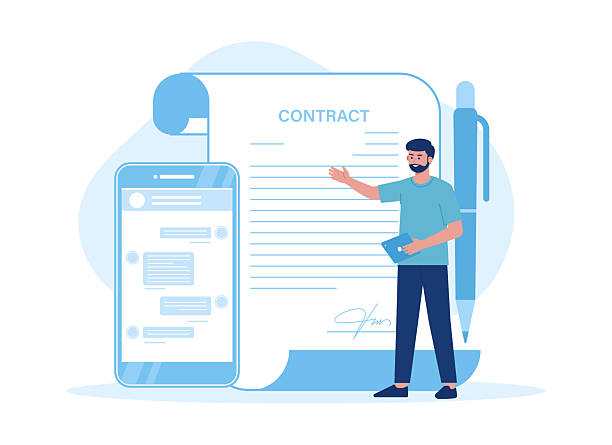
Technical SEO deals with the technical aspects of a website that directly affect how search engines crawl and index the site.
This section may be less visible to the user, but it plays a crucial role in SEO-optimized website design.
Page Speed is one of the most important factors; a slow-loading site provides a poor user experience and is penalized by Google.
Image optimization, code compression (CSS, HTML, JavaScript), and using Content Delivery Networks (CDNs) can help improve speed.
Mobile-friendliness is also of high importance, as a large portion of searches today are conducted via mobile devices.
Using Schema Markup to help search engines better understand your content, and ensuring site security with HTTPS, are other aspects of technical SEO.
This section provides a specialized and news-oriented review of the latest changes in Google’s algorithms related to technical SEO.
Is your website ready for the mobile world? Does it use the latest security technologies? Neglecting technical SEO can mean losing a vast amount of organic traffic, even if you have excellent content.
Link Building and Domain Authority Enhancement

Link Building is one of the pillars of off-page SEO that helps increase your website’s Domain Authority.
When reputable and relevant websites link to your site, it’s a strong signal to search engines that your content is valuable and trustworthy.
This process is like voting on the internet; the more positive votes (quality backlinks) you have, the higher your chances of ranking increase.
However, not every link is beneficial; quality outweighs quantity.
Links should come from reputable sites relevant to your field of activity.
Link-building strategies include creating valuable content to attract natural links, collaborating with influencers, being present in online directories, and digital public relations.
This section provides an analytical and guide on the best link-building methods for high-SEO website design.
How can one acquire high-quality, natural links? Is buying links permissible? The answers to these questions can clarify your off-page SEO path.
Link building is a time-consuming process, but its impact on your website’s authority and ranking is unparalleled and significantly helps your visibility among competitors.
| Backlink Type | Description | Benefit |
|---|---|---|
| Editorial Links | Links that other websites naturally provide due to the value of your content. | Highest SEO credibility and stability |
| Broken Link Building | Finding broken links on other websites and suggesting replacing them with your content. | Good opportunity to acquire relevant backlinks |
| Links from Directories (Directory Submissions) | Submitting the website to reputable and relevant directories. | Establishing a foundation for link building, especially for local businesses |
Essential Tools for SEO Analysis and Improvement

For your efforts in professional website design and its SEO to yield results, continuous monitoring and analysis are essential.
SEO tools play a vital role in this area.
Google Search Console helps you view your site’s performance in Google search results, identify indexing issues, and receive search-related reports.
Google Analytics is also a powerful tool for analyzing website traffic, user behavior, traffic sources, and conversion rates.
In addition to these free tools, there are paid and more advanced tools such as Ahrefs, Semrush, and Moz, which offer broader capabilities in keyword research, competitor analysis, link building, and technical SEO review.
These tools allow you to adjust your SEO strategies based on real data and identify your strengths and weaknesses.
This section provides a comprehensive guide and educational material for using these tools.
How can you use these tools to identify new opportunities and resolve existing issues? Without the right tools, navigating the SEO path is like driving without a map and compass.
Are you bothered by losing customers who visited your site to make a purchase?
RasWeb is your specialized solution for a successful online store.
✅ Significantly increase your online sales
✅ Build trust and professional branding with customers⚡ Get a free consultation from RasWeb experts!
SEO Challenges and Updates in Website Design
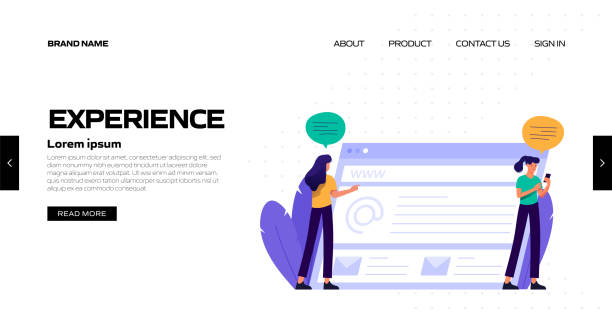
The world of SEO is constantly changing and evolving.
Search engines like Google continuously update their algorithms to provide users with the best and most relevant results.
These updates can create challenges for websites and may require a review of website design and SEO strategies.
For example, recent Google algorithms place a greater emphasis on user experience, high-quality content, and E-E-A-T (Expertise, Experience, Authoritativeness, Trustworthiness).
Adapting to these changes requires specialized knowledge and continuous monitoring of SEO news and analyses.
Stability in ranking requires flexibility and readiness to adapt to new algorithms.
News-oriented and engaging content in this area can keep you up-to-date.
Will Google’s next algorithm affect your industry? How can we prepare for these changes? These challenges also present opportunities to outperform competitors if you can react faster and better.
Investing in SEO education and knowledge updates is a necessity.
Conclusion and the Future of SEO-Optimized Website Design

In this article, we discussed in detail the importance of SEO-optimized website design and its various aspects.
From keyword research and content optimization to technical SEO and link building, each section plays a crucial role in a website’s success.
The future of SEO is moving towards an increased emphasis on user experience, high-quality content, and responding to users’ search intent.
Voice Search, Artificial Intelligence in search results, and Visual Content (such as video) are also trends that should be considered in future SEO strategies.
SEO-optimized website design is no longer an option but a necessity for any online business seeking sustainable growth and increased market share.
By consistently adhering to these principles and staying up-to-date with algorithm changes, you can ensure that your website consistently ranks high and attracts the organic traffic needed for success.
This is an explanatory and analytical look at the path ahead.
Is your business ready for this future? This is the final question you need to answer.
Frequently Asked Questions
| Question | Answer |
|---|---|
| What is SEO-optimized website design? | SEO-optimized website design means designing and coding a website that is technically, content-wise, and structurally optimized so that search engines can easily crawl, index, and assign a higher ranking to it in search results. |
| Why is SEO-optimized website design important? | Its importance lies in increasing website visibility in search engine results (like Google), attracting more organic traffic, improving user experience, and ultimately increasing the conversion rate (sales or desired actions). |
| What are the most important technical SEO factors in website design? | High loading speed, responsiveness (Mobile-Friendly), proper URL structure, use of SSL certificate (HTTPS), XML sitemap, and robots.txt file. |
| How does Responsive Design affect SEO? | Since a large portion of searches are done via mobile, Google prioritizes responsive websites. Responsive design improves user experience and reduces bounce rate, both of which help SEO. |
| How does website loading speed affect SEO? | Loading speed is an important ranking factor for Google. Slow websites lead to a poor user experience, increased bounce rate, and reduced search ranking. |
| What is the role of URL structure in SEO? | Short, readable URLs containing relevant keywords help both users and search engines better understand the page’s topic, which positively impacts SEO. |
| What is the importance of using Title Tags and Meta Descriptions in SEO design? | These tags provide information about the page’s content to search engines and users. Optimizing them with appropriate keywords increases the click-through rate (CTR) and improves content understanding by search bots. |
| What is the importance of Image Optimization in SEO? | Reducing image size to increase site speed, using descriptive Alt text (including keywords) to describe the image to search engines, and increasing the chance of appearance in Google Image Search. |
| How does Internal Linking help SEO? | Internal linking helps search engines better understand the site’s structure, distributes authority (PageRank) throughout the site, and directs users to relevant pages, which improves user experience and reduces bounce rate. |
| What is the connection between User Experience (UX) and SEO? | Google values websites that provide a good user experience. Attractive visual design, easy navigation, readable content, and high speed all contribute to improving UX, which in turn leads to a reduced bounce rate, increased time spent on the site, and positive signals to search engines. |
And other services of RasWeb Advertising Agency in the field of digital advertising:
Smart Digital Branding: A new service to increase customer acquisition through custom programming.
Smart Conversion Rate Optimization: A specialized service for increasing website visits based on custom programming.
Smart Social Media: Revolutionize campaign management with the help of key page optimization.
Smart Customer Journey Mapping: Professional optimization to increase website visits using marketing automation.
Smart Digital Advertising: A new service to increase customer acquisition through attractive UI design.
And over hundreds of other services in the field of internet advertising, advertising consultation, and organizational solutions
Internet Advertising | Advertising Strategy | Advertorial
Resources
SEO-Optimized Website Design Tutorial
Complete Website SEO Guide
Key SEO Tips in Web Design
SEO Tutorial Video for Beginners
? Are you ready for your business to shine in the digital world? RasWeb Afarin Digital Marketing Agency, with a specialized and creative team, offers the best comprehensive solutions, including custom website design, SEO optimization, and smart social media management for your sustainable growth and success.
📍 Tehran, Mirdamad Street, next to Bank Markazi, Southern Kazeroon Alley, Ramin Alley, No. 6

